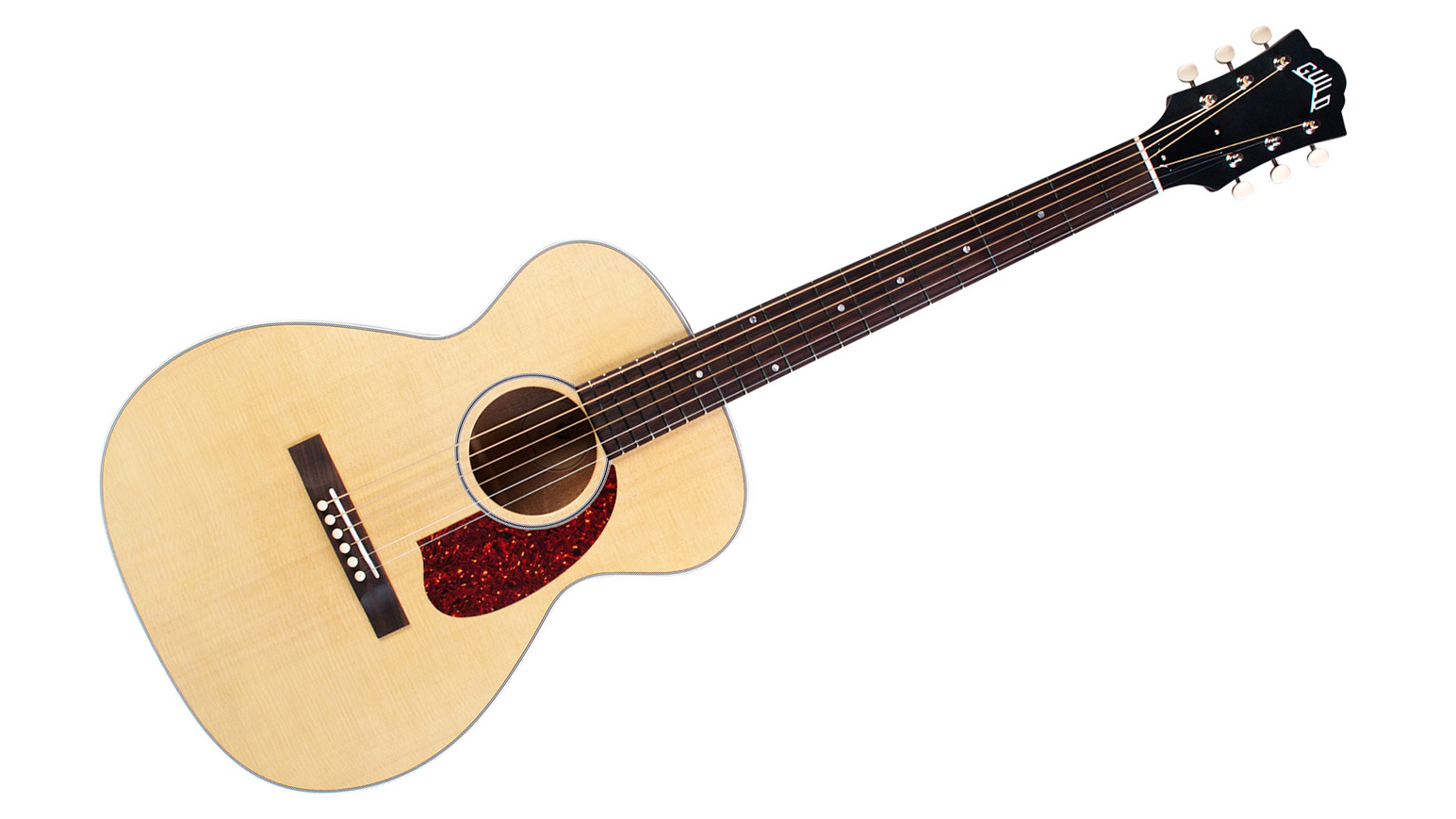MusicRadar Verdict
A welcome return...
Pros
- +
Strong and muscular highs for a small body.
Cons
- -
Neck changes may disappoint F-20 fans.
MusicRadar's got your back
Back in the late 1960s Guild enjoyed a golden era, building concert-sized guitars that attracted a wealth of folk players.
Alongside the all-mahogany M-20, associated with Nick Drake after its inclusion on the cover of his 1971 album Bryter Layter, the spruce-topped F-20 and the longer scale F-30 won favour for their surprisingly full sounds.
But for years they remained something of an underrated gem on the vintage market. Now the old Troubadour has returned with a new name and the expectation of recharging its reputation.
This isn’t the first time the F-20 design has returned to Guild’s line-up, but it is a Californian debut. In 2012 Guild, then under Fender ownership, recognised the growing interest in parlour-sized acoustics and began producing the standard model again in its facility in New Hartford, Connecticut.
Two years later the factory ceased production, and those models are hard to find, but with ownership of the Guild brand passing to the Cordoba Music Group and the New Hartford machinery moving to Ventura County in the Golden State for production in 2015, a Californian F-20 now makes a return. Of sorts. Unlike Guild’s M-20, it’s now under a new moniker.
The ‘M’ denoting the body size and the 40 signifying spruce top/mahogany body. So, can this new edition uphold the reputation?
The M-40E is a lightweight guitar but its neck is an interesting blend of accessibility and substantial width.
The smooth satin finish and C-shape is welcoming to the palm, but the nut width on this new chapter for the F-20 story is actually wider than the 1960s examples at 44.45mm, with vintage F-20 examples we’ve seen at around 43mm. It’s a surprising change.
Sounds
With a wide neck and ample string spacing, the M-40E is a guitar that responds well to more muscular playing - whether that be chordwork or strong fingerpickers from the Nick Drake school of folk finesse. Its light weight and intimate proportions actually encourage that kind of physicality.
The tension and medium action here on our test guitar mean we need it too, but the payoff is strong treble response and a defined vintage warmth rather than modern hi-fi chordal sparkle. It’s a natural home for blues roots and country folk with a low end that feels broad for this body size while allowing the throaty and ringing high mid and treble strengths to come to the fore.
And it’s a voice that lends itself to recording without having to worry about dialling the low end out at the mixing stage. This is the kind of voice and neck experience that also feels like a good excuse to tune down and dust off the slide too.
The M-40E is fitted with the LR Baggs Element VTC under-saddle pickup and setting the tone control at its mid point immediately reveals a hotter bass response than expected. As the tone control here is a treble roll-off we took our acoustic combo’s bass EQ down two notches to regain more of the guitar’s natural acoustic balance.
Some may prefer the prospect of boosted lows and the Element - which also captures the soundboard’s movements - certainly reflects an acoustic timbre very well for an undersaddle system.

Rob is the Reviews Editor for GuitarWorld.com and MusicRadar guitars, so spends most of his waking hours (and beyond) thinking about and trying the latest gear while making sure our reviews team is giving you thorough and honest tests of it. He's worked for guitar mags and sites as a writer and editor for nearly 20 years but still winces at the thought of restringing anything with a Floyd Rose.
“Sometimes I am two people. Johnny is the nice one. Cash causes all the trouble. They fight”: How Johnny Cash drew on his own experiences to make his greatest songs
“For those on the hunt for a great quality 12-string electro-acoustic that won’t break the bank, it's a no-brainer”: Martin X Series Remastered D-X2E Brazilian 12-String review
“I have that on more records than anything else”: Take a peek inside Vaughn Oliver’s studio










